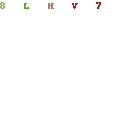Welcome back to the second part of our series designed to help you
better understand revenue fluctuations. If you're just joining us now,
or if you'd just like to brush up on those reporting terms before we
dive in again, feel free to visit our previous post from earlier in
the week.
Choose the right treatment
You're finished investigating the cause of the revenue fluctuations,
and it's time to take action. Find the symptom you identified below
for suggested treatments.
Page impression changes
* Check for AdSense technical issues or public service ads (PSAs). If
ads aren't being served on your site, we aren't registering page
impressions.
* Don't miss out on search traffic. Use Webmaster Tools to make sure
that Google is properly crawling and indexing your site.
* Consider the promotions you have running for your site. Did an ad
campaign end, causing a drop in traffic? Has a popular site linked to
you, causing a spike in page impressions?
CTR changes
* A drop in CTR can be caused by a user interface (UI) that's not
optimized or by poor targeting. Readers won't click on ads they don't
see or find irrelevant. To improve the relevance of your ads, you
might want to try section targeting.
* Check for crawl problems. If our system can't crawl your page, we
can't serve relevant ads.
* If you've implemented or changed your ad server, check that there
are no new targeting problems.
* Have you changed the look and feel of your site? Follow our
optimization best practices whenever launching a site redesign. An
easy way to start is to match the ad colors to the design of your site
and choose a top performing unit such as the 300x250 medium rectangle.
* If your CTR has been in a slow decline, your readers may be
experiencing ad blindness. Try testing new ad formats, placements, or
colors.
CPC changes
* CPCs are determined by advertiser bids and are not directly under
publisher control. Most large CPC changes are seasonal. For example,
certain ad verticals attract more spending during the holiday or back-
to-school seasons.
* CPCs can also fluctuate as advertisers begin and end their
advertising campaigns.
* You can always improve your CPCs by choosing ad formats that support
all ad types: text, image, video, flash, and gadget ads. More
competition means higher advertiser bids.
Placement targeting revenue changes
* If overall targeted revenue is changing, determine what your average
placement-targeted revenue has been for the past few months. Your goal
is to determine if the changes in your recent earnings are part of a
trend or a short-term earnings fluctuation.
* Publishers can experience spikes in placement-targeted revenue when
advertisers run limited-time campaigns. For example, an advertiser may
run a large placement-targeted campaign only during the opening week
of a summer blockbuster movie.
* If you want to increase placement targeting over the long term, set
up ad placements. This will make it easier for advertisers to find and
target your site.
Finally, two more things...
Where are the changes happening?
Many AdSense publishers run multiple websites or have site sections
that perform very differently. For example, the article section of a
cell phone review site may have a higher eCPM than the forums.
Whenever you notice revenue changes at the account level, always
determine which of your sites or sections is causing the change. You
can set up URL and custom channels to track all the important parts of
your account separately. Knowing exactly what is changing and where
will allow you to make the smartest decisions about what to do.
Taking seasonal fluctuation into account
Take a broader view and look for historical fluctuations in the
metrics described above. Over the same time period last month or last
year, you may find similar volatility in your eCPM, revenue, or page
impressions. For example, you can compare the Mother's Day performance
of a flowers and gifts site for 2006 and 2007. Is your current account
performance consistent with the previous time range? If so, the
revenue change you're investigating might reflect a recurring pattern.
I hope this series will help you get the most out of AdSense, and the
next time your revenue changes, I hope it's for the positive.
Posted by Christian Ashlock - AdSense Optimization Team
Friday, March 07, 2008 at 9:08:00 AM







